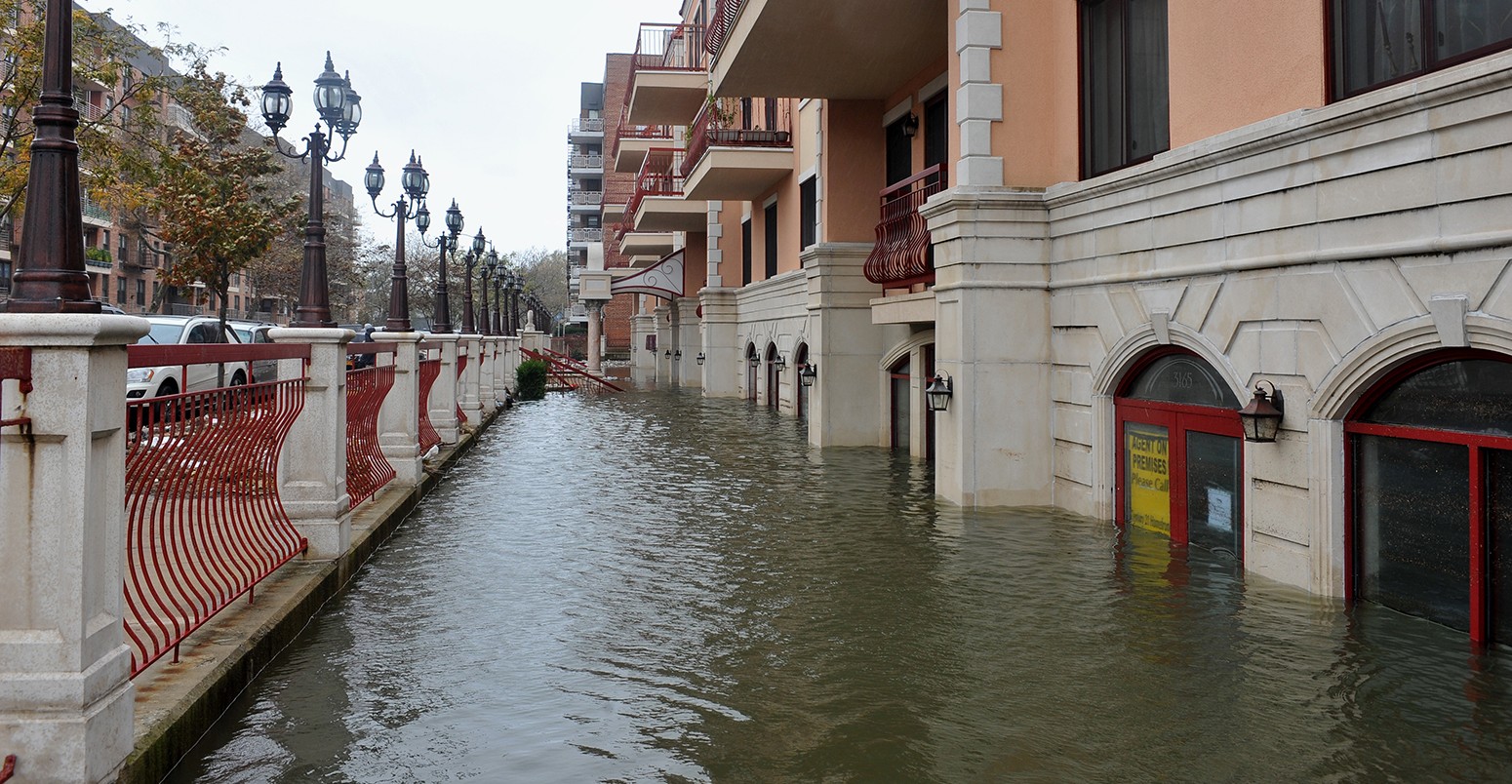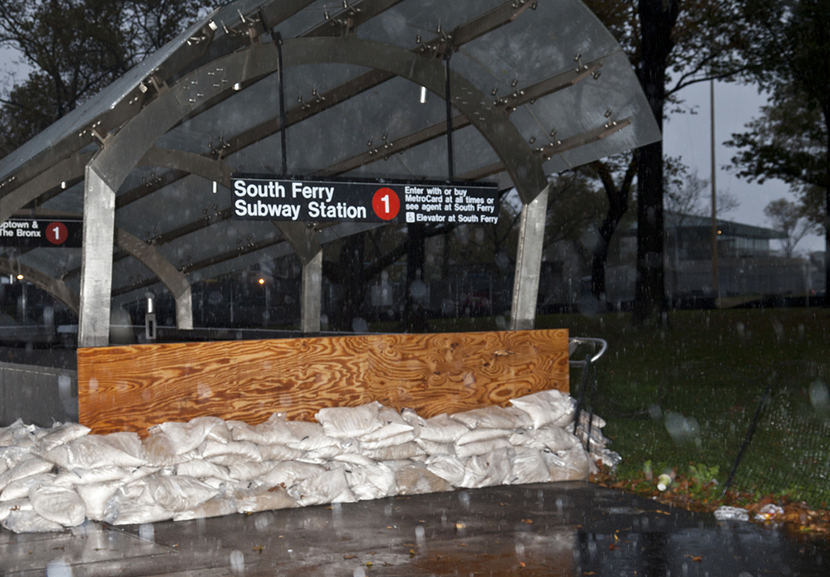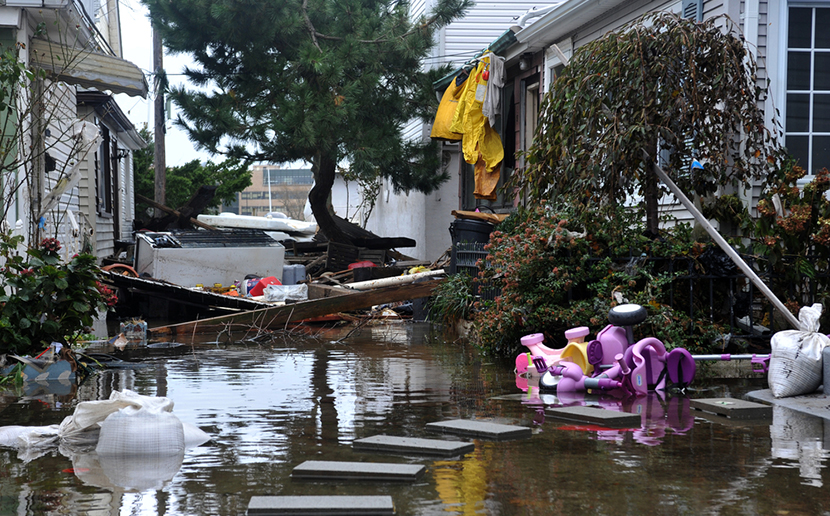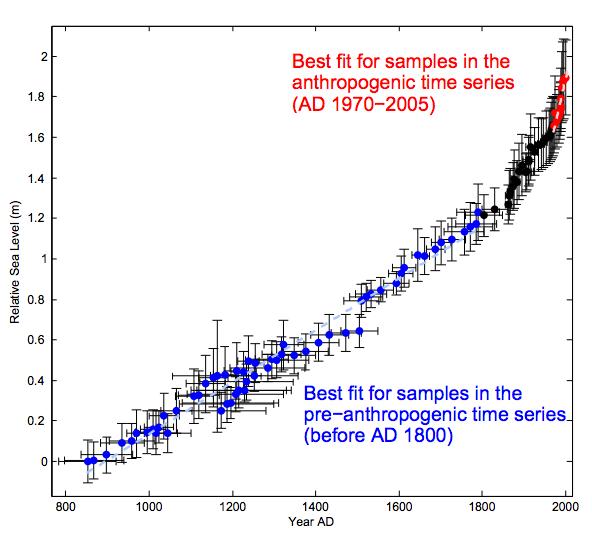Climate change is raising the risk of coastal floods in New York City, study finds
Robert McSweeney
09.28.15Robert McSweeney
28.09.2015 | 8:00pmRising sea levels and changing tropical cyclones are pushing New York City coastal floods to new heights, says a study published today.
Floods hitting the city are now more than a metre higher than before humans had an influence on the climate, the research shows, increasing the risk of coastal defences being overwhelmed.
Coastal flooding
In 2012, Hurricane Sandy tore through the Caribbean and parts of Americas east coast.
In the US, this tropical cyclone – dubbed Superstorm Sandy – and the flooding it caused destroyed at least 650,000 houses and racked up $50bn of damage. For New York City specifically, 43 people died – despite many areas being evacuated – and flood water even inundated the subway system.
The devastation triggered a new study, published in Proceedings of the National Academy of Sciences, to assess how the threat of coastal flooding in New York has been affected by climate change. Lead author, Andra Reed, from Penn State University in the US, explains to Carbon Brief:
Sandy highlighted the vulnerability of New York to flooding from storm surges and sea level rise, and motivated us to study the region to see how climate change may already be impacting both sea level and tropical cyclone characteristics.
South Ferry subway station in New York boarded with plywood and sandbags in preparation for Hurricane Sandy. Credit: Shutterstock
Storm surge
Much of the damage wreaked by Hurricane Sandy was a result of the 3-4m storm surge it caused, the study says.
When a storm weather system is over the sea, its low pressure centre pulls up the surface of the water. Then, as the storm blows onto the land, the wind pushes the sea towards the coast, creating even higher sea levels and hitting the coastline with large waves. This is a storm surge.
The height that a storm surge can reach is dependent on the underlying sea level, the tide, and scale of the tropical cyclone. So as sea levels rise, a storm surge has more chance of breaching coastal flood defences. Likewise, if tropical cyclones become more frequent, more intense or longer-lasting, storms surges could also reach new heights.
To see if either had changed, Reed and her colleagues compared coastal flooding in New York City during two time periods: a pre-anthropogenic era when the human influence on climate was minimal (the years 850 to 1800) and an anthropogenic era when it was dominant (years 1970 to 2005).
As records of tropical cyclones in the North Atlantic only stretch back to 1851, the researchers first had to reconstruct a data record of cyclones. They used data from state-of-the-art climate models for sea surface temperature, humidity, and wind speed – all important factors in how cyclones develop – to create a dataset of tropical cyclones from 850 to 2005. They could then work out the size of storm surges the cyclones would produce, and combine the information with sea level data to give flood heights across the whole 1,200-year period.
When the researchers compared the pre-anthropogenic and anthropogenic eras, they found the average height of a coastal flood hitting New York City has risen by about 1.24m since humans started affecting the climate.
Flooding in Sheepshead Bay neighborhood of Brooklyn as a result of Hurricane Sandy. Credit: Shutterstock
Acceleration
So what is behind this increase in flood levels hitting New York City? Reed explains:
Rising sea levels contribute the greatest overall to the increasing flood heights in our study.
The figure below shows how sea levels have changed relative to the land surface at New Jersey, just to the south of New York City. The relative rise during the pre-anthropogenic era (blue dashed line) is largely down to natural causes, such as melting glaciers since the end of the last ice age, and the land surface subsiding, Reed says.
During the recent, anthropogenic era (pink dashed line), the rate of sea level rise is more than six times faster, the paper says.
Reconstruction of relative sea level rise for southern New Jersey. Blue data points and dotted line show pre-anthropogenic era, while red data points and pink dotted line show anthropogenic era. Source: Reed et al. (2015)
Changes in the intensity and size of tropical cyclones, by contrast, dont appear to have had a significant effect on the average flood hitting New York City, the study finds. But thats not to say they havent had an impact, Reed says:
[Tropical cyclones] become more significant contributors to the increasing flood heights when we are considering the most extreme storm surge events that are likely to determine the flood risk for New York City.
The researchers found that the strongest types of tropical cyclones (categories 3, 4 and 5) are more frequent in the anthropogenic era in almost all of their modelling results, and this means big storm surges are arriving more often. For example, a 2.25m-high flood would have been expected once every 500 years before human-caused climate change, but is now expected to strike every 24 years. Reed puts this another way:
A flood of the magnitude that a person may never have seen in a lifetime in the pre-anthropogenic era is becoming an event that a person may now see several times during their lifetime in the present climate.
Size and intensity
The researchers identified two types of tropical cyclone that tend to hit New York City – and found that both have been getting stronger.
The first type is a cyclone that has relatively low wind speeds, but a very large radius. Hurricane Sandy was an example of this type of cyclone, Reed says. These storms are even larger in the anthropogenic era, the study finds.
The second type is a smaller storm, but with much higher wind speeds – and these speeds are faster since humans have been influencing the climate, says Reed:
We believe that what we are seeing in our results is most likely an increase in the extremes of two different kinds of storms during the anthropogenic era – an increase in the size of larger storms, which are not necessarily intense, as well as an increase in the strength of intense storms, which may not necessarily be very large.
Both types of storms are capable of producing significant storm surges, Reed warns.
New York Air National Guard taking water and cases of food to local residents in Staten Island in aftermath of Hurricane Sandy. Credit: DVIDSHUB
More common
The study shows that New York City is already seeing increases in flood heights and the risk of coastal inundation as a result of human-caused climate change. We can expect more of the same in the future, says Reed:
As climate continues to change and temperatures continue to climb, it would be logical to expect that flood heights for New York City will continue to rise, and the most extreme flooding events will continue to become more common.”
The impact of rising sea levels isnt gradual, notes Prof Kevin Trenberth from the US National Center for Atmospheric Research, who wasnt involved in the study. He tells Carbon Brief:
They are manifested as new extremes that cross thresholds and cause things to break when a storm surge occurs on top of high tide, that, in turn, occurs on top of rising sea level from climate change. This is why levees are topped – in New Orleans, or along the Mississippi – or the subways are flooded in New York.
This emphasises the need to protect the city from floods, as well as trying to limit further climate change, concludes Reed:
It is important that we not only take steps to reduce human-caused climate change, but it is also important to develop risk-management strategies for New York City flooding events.
Reed, A. J., et al. (2015) Increased threat of tropical cyclones and coastal flooding to New York City during the anthropogenic era, Proceedings of the National Academy of Sciences, doi/10.1073/pnas.1513127112
Main image: Serious flooding after Hurricane Sandy in Brooklyn, New York. Credit: FashionStock.com/Shutterstock.com.
-
Climate change is raising the risk of coastal floods in New York City, study finds






